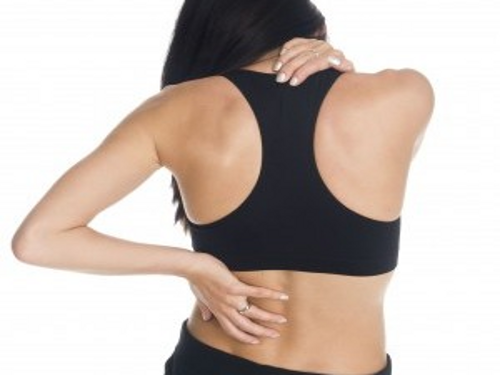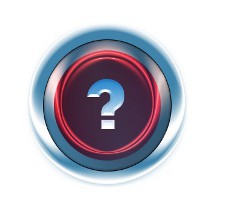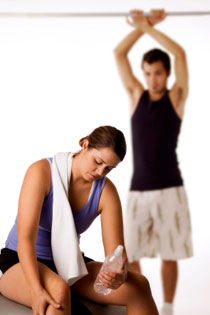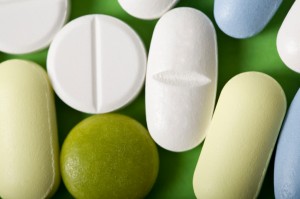 Who would have thought that the muscle soreness that you experience after a workout would have an acronym all its own and would have been the subject of many scientific and medical studies?
Who would have thought that the muscle soreness that you experience after a workout would have an acronym all its own and would have been the subject of many scientific and medical studies?
That is exactly the case and, while the findings on the types of treatments that have proven effective have fallen under debate, there is no question that there is much you do can do to overcome the soreness in your muscles that you feel after a hard workout.
What is DOMS?
 DOMS is an acronym for the “delayed onset muscle soreness” that you might feel between 24 and 48 hours after a particularly difficult workout. The level of discomfort usually increases gradually and, according to physicians specializing in sports medicine, is completely normal.
DOMS is an acronym for the “delayed onset muscle soreness” that you might feel between 24 and 48 hours after a particularly difficult workout. The level of discomfort usually increases gradually and, according to physicians specializing in sports medicine, is completely normal.
“Delayed onset muscle soreness (DOMS) is a common result of physical activity that stresses the muscle tissue beyond what it is accustomed to,” reported David O. Draper on WebMd.com.
Draper, a professor and director of the graduate program in sports medicine/athletic training at Brigham Young University in Provo, Utah, explains that the soreness occurs when the muscle is performing “an eccentric or a lengthening contraction.” Examples of the types of activities that bring on DOMS include the act of running downhill or the lengthening part of a bicep curl.
The common thought in the scientific community is that the soreness happens when “small microscopic tears” occur in the muscle. The mild form of muscle strain creates damage to the fibers on the microscopic level that,according to WebMd.com, causes the pain, along with inflammation.
“The aches and pains should be minor,” said Carol Torgan, an exercise physiologist and fellow of the American College of Sports Medicine, “and are simply indications that muscles are adapting to your fitness regimen.”
Who Gets DOMS?
 The easy answer is that anyone, even a professional athlete or bodybuilder, can experience muscle soreness after a difficult fitness session.
The easy answer is that anyone, even a professional athlete or bodybuilder, can experience muscle soreness after a difficult fitness session.
“Anyone can get cramps or DOMS, from weekend warriors to elite athletes,” commented Torgan. “The muscle discomfort is simply a symptom of using your muscles and placing stresses on them that are leading to adaptations to make them stronger and better able to perform the task the next time.”
However, it is also true that muscle soreness is very common in people that are out of shape and hit the gym, or those who may spend long periods of sedentary activity and then decide to go out for a jog or lift some weights.
“The big problem is with people that aren’t very fit and go out and try these things; they get all excited to start a new class and the instructors don’t tell them that they might get sore,” she added. “To them they might feel very sore, and because they aren’t familiar with it, they might worry that they’ve hurt themselves. Then they won’t want to do it again.”
Discouragement from the pain and not the actual soreness is the biggest problem for these folks and what keeps many people sitting on the couch instead of out getting fit.
How Do You Treat DOMS?
 Though no “magic pill” has yet been discovered, most exercise physiologists and athletic trainers agree that a combination of a tried-and-true methods work best. Time is suggested as the perfect healer, but who has the patience for that anymore? Ice, heat, massage, stretching, and anti-inflammatory meds have all seemed to work, from time to time, even light exercise such as swimming or walking has been to known to break up pain.
Though no “magic pill” has yet been discovered, most exercise physiologists and athletic trainers agree that a combination of a tried-and-true methods work best. Time is suggested as the perfect healer, but who has the patience for that anymore? Ice, heat, massage, stretching, and anti-inflammatory meds have all seemed to work, from time to time, even light exercise such as swimming or walking has been to known to break up pain.
At Brigham Young University, Draper has also been “researching the use of heat remedies to treat muscle soreness.” The BYU studies looked at patients wearing an air-activated heat wrap – ThermaCare – that is applied directly to the skin.
“When muscle temperature is increased, blood flow increases, bringing fresh oxygen and healing nutrients to the injured site,” he says. “This increased blood flow also helps to wash away the chemical irritants responsible for pain.”
Prevention is also an important measure.”Probably the most important thing is to have a cool down phase after your workout,” said Dr. Draper. Right before finishing, include 10 or so minutes of, “easy aerobic work such as jogging or walking followed by stretching.”
Treating DOMS With Nutritional Supplements
According to Johndavid Maes and Len Kravitz, PhD, both of the University of New Mexico, a potential treatment for muscle soreness using nutritional supplements has emerged. Maes and Kravitiz suggested using antioxidants such as Vitamins C and E can fight muscle pain.
Antioxidants, according to their research, have been known to “reduce the proliferation of free radicals, which are thought to be generated during the inflammatory response potentially causing more damage to an affected muscle.” Though research studies on anti-oxidant therapy have been inconclusive, both University of New Mexico professors contend that those suffering from muscle pain could give those supplements a try.
Two supplements that the professors did not recommend, however, are “coenzyme–Q and L-carnitine.” Both supplements have been shown, through research, to be ineffective in treating muscle pain and, in fact, “maybe even worsen symptoms.” In the June 2010 edition of the Sports Injury Bulletin, that opinion was seconded with the authors commenting, “if you are thinking of topping up with supplements such as Arnica, Coenzyme-Q and L-Carnitine, the advice would be to save your money” until more research can be conducted.
Another supplement just hit the markets in January, α-hydroxy-isocaproic acid (HICA). This is a new supplement being promoted as capable of doing everything from reducing fat to retarding the symptoms of muscle soreness. After four weeks of taking 500 mg of HICA, the study showed that soccer players using the supplement gained more total weight, gained more lean body mass, and had less DOMS after the trial period. Though this is just one study group, the results are promising, and HICA could become a player in the supplement market in the next half-decade.
Be Smart When You Are Sore
Most experts concur that common sense should rule the day. Soreness has been proven by sports physiologists to reduce effective of training and protection so the advice is to not push your workout. If you are sore, rest, and give your body time to heal.
You can certainly try various treatments, such as icing, heat, stretching, and other treatments that are known to help. Some athletes, such as Hines Ward of the Pittsburgh Steelers and Santonio Holmes of the New York Jets swear by hyperbaric chambers that are said to reduce soreness and trauma while increasing an athlete’s healing but, again, there is no evidence that expensive treatments work either. Or, you can get into antioxidant therapy with Vitamin C & E, or use supplements such as L-Carnitine and coenzyme-Q, but the jury is out on those treatments as well.
Bottom line: use common sense, rest your body, stretch and ice down if necessary, and get back into your fitness routine when you are ready.